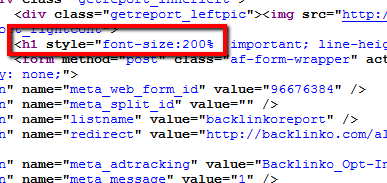SEO website designs in 2017
Add Modifiers For Your Title
Using modifiers like “2016”, “ best”, “guide”, and “review” can help you rate for long tail variants of your target keyword.
Beginning Title With Key Word
Your name tag is the most important on-page SEO variable. In general, the closer the key word will be to the start of the name tag, the more weight it has with search engines. You don’t consistently have to start your title tag together with your target keyword. But when there’s a keyword that you’re gunning for, try and put it towards the beginning of your name.

Use Societal Sharing Buttons
Social signs may not play a primary role in ranking your web site. But shares that are societal create more eyeballs in your articles.
And the more eyeballs you get, the more likely someone is to link to you. So don’t be shy about placing social sharing buttons conspicuously on your site. In fact, a study by BrightEdge found that societal sharing cans increase .
Societal signals aren’t an essential part of the Google algorithm. But you may be given an indirect rankings boost by societal shares on sites like Google, Twitter and Facebook.
Use Internal Links
Internal linking is SO money. Use 2-3 in every post. In the event that you wish to determine a terrific example of how to internal link on your own internet site, check out Wikipedia.
They add keyword-loaded internal links to every entry: Obviously, they're able to get away with 50 internal links per page because they’re Wikipedia. I advocate a simpler (and safer) strategy: link to 2-5 senior posts once you print a new one.
Dazzle with Multimedia
Text can only choose your content so far. Participating images, diagrams and videos can reduce bounce rate and increase time on site: two crucial user interaction rank factors.
Because I steadfastly think that it makes my content directly up better, that’s.
But it's a nice Search Engine Optimization gain to boot: multimedia helps you foster those user-interaction signals that Google continues to be paying a lot more attention to. Also it increases the perceived value of your content –which means that individuals are more inclined to link to it.
Post Long Content
The Search Engine Optimization adage “span is strength” was supported by our business study which found that content that is longer has a tendency to rate higher on Google’s first page.
Target for at least 1900 words for each piece of content which you publish. Generally, I make sure my articles all have 1000 words of meaty, content that is useful.
Content that is more can help you rank better for your target keyword and brings a win-win!
Wrap Your Site Post Title within an H1 Tag
The H1 tag is your headline tag” that is “. Most CMS’s (like WordPress) automatically add the H1 tag to your blog post name. You’re all place if that’s the case.
But this setting is overridden by some themes. Assess your website’s code to ensure your title gets the H1 adore it deserves. I used to suppose that my post titles were hooked up by WordPress with H1 tags… until I actually looked at my website’s code.
Then I understood that WordPress themes occasionally use H1 tags to increase text size. As an example, my e-mail opt-in area used to be enveloped in an H1 tag: Worth checking out your website’s code to ensure you have just one H1 tag per page it’s. And that H1 tag should contain your target key word.

Use Outbound Links
This really is an easy, white hat SEO strategy to obtain more traffic. Outbound links to related pages helps Google figure out your page’s topic. It also demonstrates Google that the page is a hub of quality information.
Not linking out might be the #1 on-page SEO mistake that I see people make. I attempt to use 2-4x outbound links per 1000 words. That’s a good rule of thumb for the majority of websites.
Remember the websites you link out to reflect for you. So make sure whenever possible, to link out to power sites.
